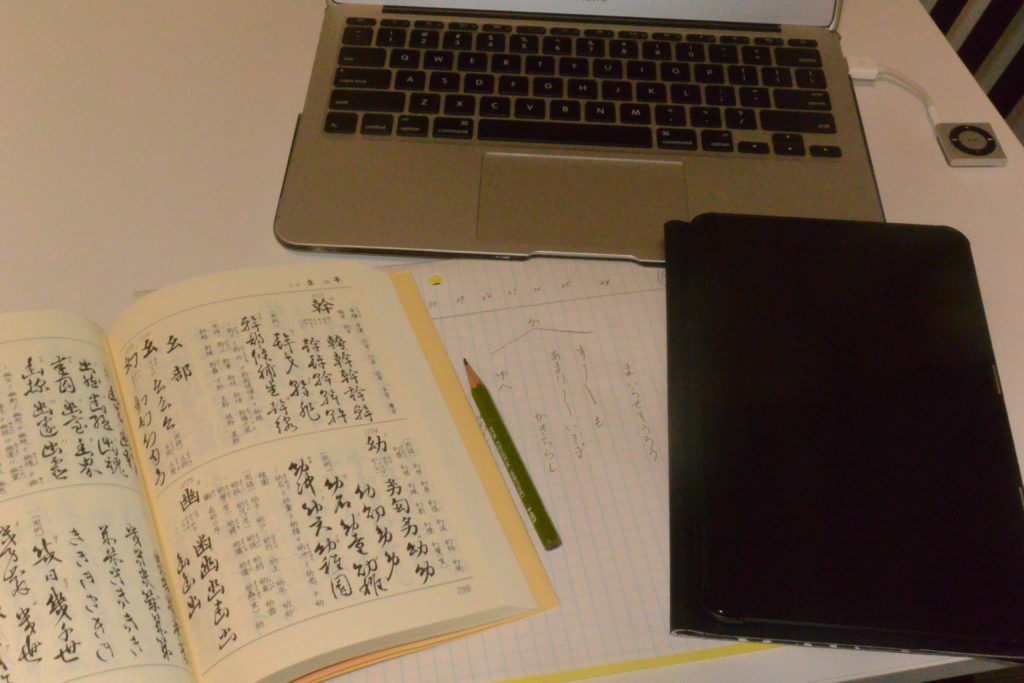Reading Kuzushiji with Technology Outside of Japan
I am Saeko Suzuki, a PhD student at the University of British Columbia, Canada. My doctoral project aims to understand how publishing systems textualize and visualize knowledge for printed books in response to social and political transformations during the Edo period.I attended the Reading Kuzushiji Workshop at the University of Chicago during the past three years under the instruction of professors from the Center for Northeast Asian Studies at Tohoku University. All the learning outcomes of the workshops guided my productive examination of woodblock printed books and archival records in several repositories in Japan. My passion for the subject stems in part from my former career as a rare book librarian and database analyst in North America. The experiences also taught me to appreciate both conventional methods and effective technology used to decipher kuzushiji.
Like most of you probably do, I have always cleaned off a desk and prepared papers, pencils, and dictionaries before reading old texts since my first deciphering of kuzushiji. However, a computer and tablet have also become essential tools over the past five years. I open multiple electronic resources such as AI kuzushiji recognition apps and new and old kanji convertors on my PC. When transcribing, I type into Word with hyperlinked information. Some may be concerned that excessive technology use damages reading skills, but I do not believe so. My interest in new technology motivates my kuzushiji learning, like the intellectual curiosity of old materials motivates experiments using technology.
One key takeaway of technology is to help speed reading. In the past, I paid excessive attention to detail. Utilizing e-resources helped me read text with a steady rhythm and understand the content from the context. Another takeaway is to save the time of readers outside Japan. These readers must spend additional time translating the deciphered text into their primary language. The other takeaway is to provide kuzushiji reference tools. There has always been a shortage of reference tools before the e-resource period. For example, ordering a dictionary from a Japanese bookstore was my first step when organizing a kuzushiji study group with my colleagues eight years ago. Our ability to access reference tools was quite different from Japanese readers’. Today, interest in reading old texts is increasing, and new study groups are emerging in North American universities. I presume that open-access tools have partially contributed to this boom. The increase in overseas readers should develop Japanese studies, and this may increase people’s interest in Japanese culture beyond research communities.
Although I appreciate and learn from new technology, it is not my only tool. One must know how to use both conventional methods and new technologies effectively. I worked on deciphering several love letters written in female calligraphy style last spring. In the project, I transcribed these letters by hand in a notebook to reproduce the fascinating compositions while struggling with the limitation of reference materials in printed and online formats. My experiment with kuzushiji reading has only begun.Ultimately, I hope to explore best practices in evolving technology to facilitate my studies and disseminate effective methods to new kuzushiji readers in North America.
(Saeko Suzuki The University of British Columbia)

